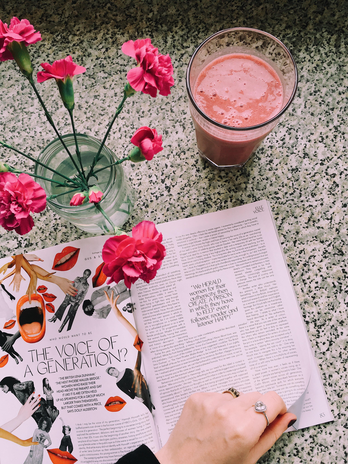Edited By: Mythili Kamath
Keywords: The Male Gaze, Masculinity, Female expression and identity
It almost seems as though romance books were created to be read in quiet corners in hushed tones, silent giggles and whispered tears. From the dramatic declarations of love in Jane Austen’s novels to the over-exhausted romantic tropes (enemies-to-lovers, rich-guy savior and poor-girl damsel, and friends-to-lovers to name a few), romance novels and their readership carry with them a sense of embarrassment. Yet, there seems to be something drawing in so many readers. Romance, in all its secrecy, is a billion-dollar industry. This seemingly paradoxical identity of romance – seeping through all objects, yet invisibilized – has been a marker of the genre since its inception. This leads us to the question – what is it about romance novels that is so terrifying?
Virginia Woolf said: “[…] the values of women differ very often from the values which have been made by the other sex; […]. Yet it is the masculine values that prevail. […] This is an important book, the critic assumes, because it deals with war. This is an insignificant book because it deals with the feelings of women in a drawing room.” That is all. The discomfort surrounding romance is, in actuality, the discomfort we have with anything that women generally enjoy and relate to.
It would be reductive, however, to relegate romance as merely a female-dominated genre that provides space for an expression of female desire. Romance, in many ways, is about female expression and identity – a subversion of the male gaze. The ‘Male Gaze’, as coined by Laura Mulvey, refers to the gaze of a heterosexual man directed at a woman. In her essay Visual Pleasure and Narrative Cinema, Mulvey identifies masculine scopophilia with voyeurism: the love for looking at the Other – an expression of desire towards the female body. Whether it’s on Harley Quinn in Suicide Squad or Megan Fox in Transformers, the lurking male gaze is all-pervasive and almost inescapable. Romance novels cut through this, divulging the seemingly “mysterious”, but often absent, interiority of the female character. It turns the gaze inwards.
Is romance feminist? Hardly.
Romance novels often tread the precarious line between abuse and love. Even in the masterpiece that is Jane Eyre, it is only normal to raise an eyebrow at the questionable power dynamics and the strange decisions characters make (anything Rochester does, really.). Yet, even in its morally questionable and sometimes utterly detestable tropes, romance novels serve almost as an archive of changing gender relations. Lynn Neal in her research on Christian romance novels points out, “In the 1970s, romance novels tended to feature dominant and aggressive heroes coupled with weak, subservient heroines. In more recent years, relationships in these novels have become more egalitarian.” These changes have become more pronounced as access to reading and writing romance has expanded through sources such as Wattpad and reading communities online. Changing dynamics sometimes subvert the expectations of female desire as seen in books like Taylor Jenkins Reid’s The Seven Husbands of Evelyn Hugo. It may even play heavily into the internal conflict and expectations that romance brings, consider Rebecca by Daphne du Maurier. Of course, there are stains in the genre that are almost a hundred years old. However, dismissing the entire genre based on this as one of frivolous fantasy fulfillment ‘trash’ is ridiculously reductive.
Romance novels, particularly with how the genre is progressing, serve as a threat to toxic masculinity. Unsurprisingly, toxic masculinity and the female gaze do not generally go hand in hand. Author Shrayana Bhattachariya, in an interview with The Sunday Times, notes, “Behind the mansplainer (like the Uncles I joke about in the book), there is an insecure man struggling to deal with a new generation of confident vocal women who expect much more autonomy and achievement than their mothers did. They expect partnership from men, not protection. Femininity has evolved, and masculinity is struggling to adapt and respond.” What we see in romance novels is also a subversion of how women view masculinity (cue Mr. Darcy’s confession… both times). Women, astonishingly, want men to treat them with respect and equal recognition. Romance, in all its complexities, especially now pushes against the rigidity of gender roles. It treats women as a little more valuable than chewed gum and allows men to feel a little more emotion than a brick wall (“Just because you have the emotional range of a teaspoon, doesn’t mean we all have.” – Hermione Granger).
Love them or hate them, romance novels with their cliches and clinch covers are here to stay. In this article, I have restricted romance novels to encompass only heterosexual relationships written from a (usually white) female perspective. However, the genre has grown much larger than that. Romance novels are not so much about lofty ideas of love and marriage as much as they are about self-expression and identity. The romance in romance novels is secondary.


